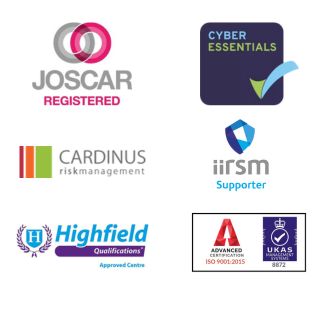Health and Safety in Nail Bars
 The nail industry is growing. There have been several articles in the press recently about the hidden dangers from salons. From people trafficking to health and safety concerns. We are going to highlight the hazards associated with the industry.
The nail industry is growing. There have been several articles in the press recently about the hidden dangers from salons. From people trafficking to health and safety concerns. We are going to highlight the hazards associated with the industry.
The problems associated with nail bars
The artificial fingernails used in nail salons are made from many different chemicals. One of these chemicals is considered to be very harmful. Nail products including acrylic nail liquids can cause dermatitis and allergic reactions. The chemicals used contain ethlyl methacrylate (EMA). This is a less hazardous substance than methyl methacrylate (MMA) which has been banned in America for use in nail products. MMA is not banned in the U.K but technicians should be using EMA.
The products used to prepare the nail surface for artificial nail extensions can cause chemical burns to skin and eyes, skin sensitisation. Exposure to acrylic nail products can cause dermatitis. Fumes from the acrylics can cause headaches, dizziness, nausea and irritation. The filing of artificial nails can cause occupational asthma.
How to control the hazards
Use less harmful products where available. Ensure that a chemical risk assessment is undertaken. A list of all the products used should be made including things like acetone, sterilising liquids. Some products may have safety data sheets. These can be obtained from the suppliers. These will indicate how they should be stored and used and any protective equipment that may be necessary such as gloves, and to be used in well ventilated areas.
Ensure all persons using the products are aware of the hazards associated with them. They should be trained in the safe use and handling of the products and given Personal Protective Equipment (PPE) where it is deemed necessary.
Research has found that ventilation tables protect the nail technicians against breathing in EMA. The ventilation can help to control chemical vapours and odour. It can capture dusts, vapours and solvents at source to stop workers inhaling them. Manufacturers instructions should be followed for the maintenance of them and as to how often the filters should be cleaned / replaced. The local exhaust should be placed as near to the EMA source as possible. When ventilation is not sufficient, the chemicals and dust particles can accumulate in the air and they can be inhaled. This can lead to occupational asthma, sensitivity to products and other illnesses. Ensure there is a much natural ventilation as possible in the area.
Spills should be cleaned up immediately. Products should be stored in small quantities with their lids replaced when not in use. Lined tight fitting metal bins can be used to dispose of pads soaked with nail products.
Other hazards associated with nail bars are repetitive strain injury. Employees may spend a long time in the same position doing the same task, often seated in poor posture. Ergonomically designed workstations with adjustable chairs should be available. Where possible tasks should be rotated, with regular breaks.
Top Tips for good practice
- Ensure the ventilation is switched on when working. Where filters are provided ensure these are maintained and replaced where necessary.
- Wash hands with mild soap and water several times a day to remove potentially irritating dust and chemicals.
- Employees should wear personal protective equipment such as gloves and masks
- Employees should check their skin every day for signs of dryness and soreness. If there is a problem, it should be reported to the employer.
- If employees are experiencing problems with their eyes, breathing, coughing or wheezing this needs to be reported to their employer.
- Ensure the workstations are set up ergonomically to prevent repetitive strain. Where possible rotate tasks and have regular breaks from doing the same task.
- Provide lined bins with lids for the disposal of pads and other items soaked in chemicals. Empty the bins daily.
- Eating and drinking should not be allowed where artificial fingernails are applied. The dust and chemicals can be accidentally carried to the face and mouth causing irritation and can cause problems if swallowed.
- Only use a small amount of chemical at a time. When the chemicals are not in use ensure the lids are put on the bottles tightly.
Get a Health and Safety Audit
If you want to ensure you are covered, give our team a call on 01666 503686 where our consultants will be more than happy to help and come to the best solution for you and your business.




